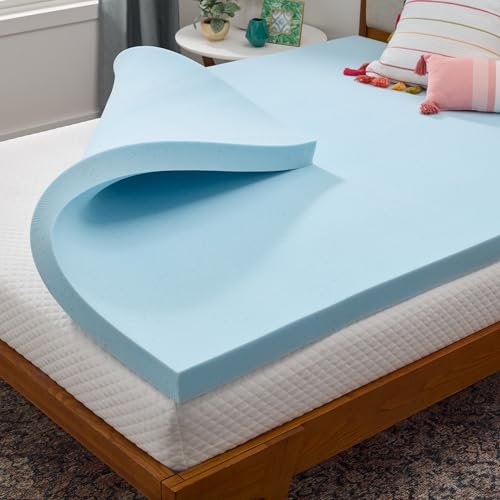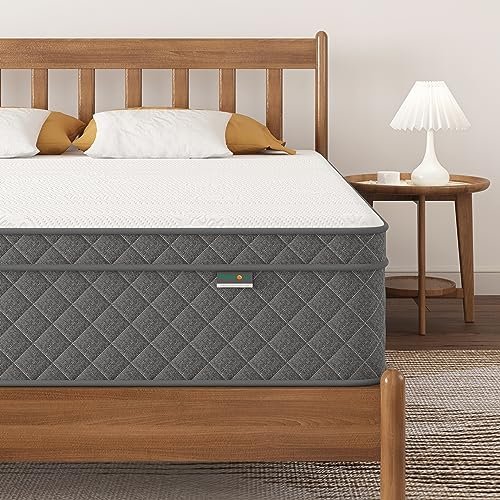
Unraveling the Mystery: What Type of Bed Frame Needs a Box Spring? Your Ultimate Guide to a Supported Sleep
Navigating the world of bed frames and mattress foundations can feel like a puzzle. One of the most common questions that pops up is: “Does my bed frame need a box spring?” It’s a valid question, as the right support system is crucial not just for your mattress’s longevity, but for your own comfort and a good night’s sleep.
Fear not, weary sleeper! This detailed guide will unravel the mystery, making it crystal clear which bed frames require a box spring and why, along with helpful tips and common mistakes to avoid.
What Exactly Does a Box Spring Do?
Before we dive into bed frame types, let’s understand the role of a box spring. Historically, box springs were essential. They are typically wooden frames containing a grid of coils, wrapped in fabric.
Their key functions include:
- Providing Essential Support: A box spring offers a flat, firm surface for your mattress, distributing weight evenly and preventing sagging, especially with traditional innerspring mattresses.
- Adding Optimal Height: Many traditional bed frames are designed to be quite low. A box spring elevates your mattress to a more comfortable height, making it easier to get in and out of bed.
- Absorbing Shock and Extending Mattress Lifespan: The coils within a box spring act as shock absorbers, taking some of the stress off your mattress and reducing wear and tear over time. This can significantly extend the life of your mattress.
- Promoting Airflow (Historically): While less critical with modern mattress designs, the open structure of a box spring allowed for some airflow, helping to keep the mattress cool and dry.
The Bed Frames That Definitely Need a Box Spring
If your bed frame has any of the following characteristics, you’ll almost certainly need a box spring (or a suitable alternative) for proper mattress support:
- Traditional Metal Bed Frames: These are often the most basic and common. They typically consist of metal side rails and perhaps a few crossbars, leaving a large open space in the middle. Without a box spring, your mattress would simply fall through or sag severely.
- Key Indicator: Minimalist design with no built-in support system like slats.
- Sleigh Beds & Antique or Vintage Bed Frames: Many elegant sleigh beds, four-poster beds, and vintage designs have side rails with a significant gap from the floor up to the bottom of the rails. They are built with the expectation that a box spring will sit within these rails, providing the necessary height and flat surface for your mattress.
- Key Indicator: A wide, open space between the side rails, designed to hold a box spring.
- Bed Frames with Only a Few Widely Spaced Slats: Some frames might come with a few wooden slats, but if they are more than 2-3 inches apart, they won’t provide adequate support for most modern mattresses. In this case, you’ll need to either add a box spring, a bunkie board, or significantly more slats.
- Key Indicator: Slats are few and far between, creating large unsupported gaps.
In essence, if your bed frame provides little to no solid surface for your mattress to rest on, you need a box spring.
The Bed Frames That DO NOT Need a Box Spring
These modern designs have built-in support systems, making a box spring unnecessary and sometimes even detrimental:
- Platform Beds: The most common type of bed frame designed specifically not to need a box spring is the platform bed.
- Key Indicator: They feature either a solid platform (like a sheet of plywood or MDF) or closely spaced wooden or metal slats (typically 2-3 inches apart, maximum). This built-in support provides a firm, even surface for your mattress.
- Adjustable Beds: These high-tech frames are foundations themselves. They allow you to elevate your head or feet and are designed to work directly with your mattress. Putting a box spring on an adjustable base would defeat its purpose and prevent it from articulating properly.
- Key Indicator: Has a motor and allows for position adjustments.
- Beds with Built-in Foundations or Storage Beds: Some modern bed frames come with a solid base, often incorporating drawers for storage underneath. These are essentially platform beds with added functionality and do not require an additional box spring.
- Key Indicator: A solid, built-in base, often with integrated storage.
If your bed frame already provides a firm, even, and well-supported surface, you do not need a box spring. Adding one might make your bed too high, reduce stability, or even void your mattress warranty.
Alternatives to a Box Spring (When Needed)
Sometimes you have a frame that needs support but a traditional box spring isn’t the right fit (e.g., for memory foam, or if you want a lower profile).
- Bunkie Board: This is essentially a thin, solid foundation, typically 1.5 to 2 inches thick, covered in fabric. It provides a firm, flat surface and is perfect for memory foam mattresses or if you want to keep your bed’s profile low while still providing the necessary support on a frame designed for a box spring.
- Adding More Slats: If your frame has a few widely spaced slats, you can often purchase or cut additional wooden slats to create a closely spaced, supportive surface. Ensure they are strong enough and have a center support if your bed is larger than a Twin.
- Plywood: A DIY solution, a solid sheet of furniture-grade plywood (at least 3/4 inch thick) cut to fit your bed frame can provide a firm surface. Be cautious with plywood, as it can restrict airflow to your mattress and, if not properly finished, could emit VOCs. Always ensure it has adequate ventilation or consider drilling holes.
How to Determine if Your Bed Frame Needs a Box Spring: Step-by-Step Instructions
Here’s a clear process to figure out what your current or new bed frame requires:
Step 1: Inspect Your Current Bed Frame
* Look under the bed: What kind of support system is there?
* Does it have slats? If so, how many and how far apart are they?
* If the slats are solid and consistently spaced 2-3 inches apart or less, you likely don’t need a box spring.
* If there are no slats, or only a few widely spaced ones (more than 3 inches apart), you do need a box spring or alternative.
* Is there a center support beam? For Queen, King, and California King frames, a center support with legs extending to the floor is crucial for stability, regardless of whether you use slats or a box spring.
* Does it have a solid, built-in platform? If so, no box spring needed.
Step 2: Consider Your Mattress Type
* Traditional Innerspring Mattresses: These often benefit most from a traditional box spring with coils for shock absorption and support.
* Memory Foam, Latex, and Hybrid Mattresses: These generally require a very firm, flat, and consistently supported surface. A traditional box spring with coils can sometimes cause these mattresses to sag between the coils or void the warranty. For these, a platform bed, a bunkie board, or a slatted foundation with very closely spaced slats (2-3 inches apart maximum) is usually recommended. Always check your mattress manufacturer’s recommendations.
Step 3: Check Your Mattress Warranty
* This is critically important! Many mattress manufacturers specify the type of foundation required to maintain your warranty. Using the wrong foundation can void your warranty if a sag occurs.
* Look for terms like “solid foundation,” “slats no more than X inches apart,” or “requires a matching box spring.”
Tips for Optimal Bed Support
- Match Your Mattress to Your Foundation: Not all foundations are created equal for all mattresses. Do your research!
- Consider the Combined Weight: A robust support system is essential for the combined weight of your mattress, foundation, and sleepers.
- Listen to Your Bed (and Your Body): Squeaks, creaks, or persistent back pain could be signs of inadequate support.
- Regularly Inspect Your Support System: Check slats for cracks, legs for stability, and the box spring for any sagging or damage.
Common Mistakes to Avoid
- Ignoring Your Mattress Warranty: As mentioned, this is a big one. Always read the fine print about foundation requirements.
- Using Inadequate Support for Memory Foam/Latex: Placing these mattresses directly on widely spaced slats or a coil box spring can lead to sagging, poor performance, and a voided warranty.
- Assuming All Bed Frames Are Universal: Don’t assume a new mattress will work with your old frame, or vice-versa, without checking the support system.
- Overlooking Bed Height: A box spring adds height. If you’re tall or prefer a higher bed, this might be great. If you prefer a lower profile, consider a bunkie board or a low-profile box spring.
Conclusion
Understanding whether your bed frame needs a box spring isn’t just about fitting pieces together; it’s about ensuring the longevity of your mattress, optimizing your comfort, and protecting your investment. By carefully inspecting your bed frame, considering your mattress type, and most importantly, checking your mattress warranty, you can confidently choose the right support system for a truly restorative night’s sleep. Sweet dreams!
Frequently Asked Questions(FAQ)
Q. What is the primary purpose of a box spring for a bed frame?
A. A box spring traditionally provides a firm, level surface for your mattress, absorbs shock, and adds height to the bed. It’s especially crucial for older innerspring mattresses that need consistent support to prevent sagging and maintain their integrity.
Q. Do platform bed frames require a box spring?
A. Generally, no. Platform bed frames are designed with built-in support, such as closely spaced wooden or metal slats, a solid surface, or a mesh grid, which negates the need for a box spring. You can place your mattress directly on the frame.
Q. When would a traditional metal bed frame or a headboard/footboard-only frame need a box spring?
A. Most traditional metal bed frames, as well as frames consisting only of a headboard, footboard, and side rails, absolutely require a box spring. These frames typically only offer a few sparse cross slats or no support other than the side rails, meaning the box spring is essential to support the mattress and prevent it from falling through.
Q. Can I use a box spring with a slatted bed frame that already has good support?
A. While you technically can use a box spring on a slatted bed frame, it’s usually unnecessary if the slats are strong, evenly spaced (typically 2-3 inches apart), and provide adequate support for your mattress type. Adding a box spring would primarily add height, but it’s not required for support and might make your bed too tall.
Q. What kind of bed frames are designed not to use a box spring?
A. Bed frames explicitly designed not to use a box spring include platform beds, adjustable bed bases, and many modern storage beds. These frames feature integrated support systems like closely spaced slats, a solid foundation, or a mesh grid, making a box spring redundant.
Q. Do adjustable bed frames require a box spring?
A. No, adjustable bed frames do not use a box spring. They are designed for a mattress to sit directly on the adjustable base, which provides the necessary support and articulation. Using a box spring with an adjustable bed would prevent it from functioning correctly and could damage the box spring.
Q. What about upholstered bed frames – do they always need a box spring?
A. Upholstered bed frames vary. Some are designed as platform beds with built-in slat systems (no box spring needed). Others are more like traditional panel beds, offering only a few support slats, in which case a box spring is essential to provide proper mattress support and height. Always check the specific frame’s internal structure and the spacing of its supports.
Q. If my mattress warranty requires specific support, how does that relate to needing a box spring?
A. Many mattress warranties, especially for memory foam, latex, and hybrid mattresses, stipulate that the mattress must be placed on a solid foundation or slats no more than 2-3 inches apart. If your bed frame does not meet these requirements, you will need a box spring or a bunkie board to provide the necessary support and avoid voiding your warranty.
Q. Can I use a bunkie board instead of a box spring for a frame that needs extra support?
A. Yes, a bunkie board is an excellent alternative to a traditional box spring, especially if you need a lower profile or firmer support. Bunkie boards are thin, solid foundations (typically 1-2 inches thick) that provide the flat, firm support needed for your mattress on frames that lack adequate support, without adding much height.
Related Articles
7 Top Full Size Bed Frames: What is the Dimensions of a Full Size Bed Frame and More!
Getting a good night’s sleep often starts with the right bed, and for many, a full-size bed is the perfect sweet spot between a twin and a queen…
How Much Is a King Size Sleep Number Smart Bed
How Much Is a King Size Sleep Number Smart Bed? Your Guide to Understanding the Investment Recommended Product: Select Comfort Air Bed Chamber for Sle…
How Much Does a Sleep Number 360 Smart Bed Cost
How Much Does a Sleep Number 360 Smart Bed Cost? Recommended Product: Sven & Son Classic Adjustable Bed Base — head and foot lift, massage, under-…



